What is information technology ? Definition and Models

- Introduction

Welcome to the world of technology . From the invention of the wheel to the development of computers and smartphones, technology has continuously evolved and shaped our lives in ways we never imagined. At the core of this evolution is information technology (IT) , a term that encompasses a vast range of tools, systems, and processes. In this blog section, we will explore the concept of IT and its impact on our modern society.
So, what is information technology? Simply put, it refers to the use of computers and telecommunication equipment to store, retrieve, transmit, and manipulate data. This includes hardware such as computers and servers, software applications, networks, internet services, and other digital devices. In today’s digital age, it’s almost impossible to imagine functioning without some form of IT.
The evolution of technology can be traced back to thousands of years ago when humans first started using tools to make their lives easier. However, it wasn’t until the 20th century that we saw a significant advancement in IT. The development of electronic computers in the mid-20th century paved the way for more sophisticated technologies such as personal computers and smartphones that we use today.
In today’s world, technology keeps evolving at a rapid pace. Every day brings new inventions and innovations that improve our daily lives. We have become so reliant on technology that many activities like communication, shopping, banking and even working are now done through technological means.
The role of IT goes beyond just making our lives more convenient; it has also transformed how businesses operate. With advancements like cloud computing and big data analytics, companies can collect and analyze massive amounts of data to make informed business decisions quickly. Not only does this increase efficiency but also provides organizations with a competitive edge in their respective industries.
Understanding Information Technology
- Hardware: This includes physical components such as computers, servers, routers, and other devices that enable the processing and storage of data.
- Software: Software refers to the programs, applications, and operating systems that allow users to perform various tasks on computers and other digital devices. This includes everything from basic productivity software like word processors and spreadsheets to complex enterprise systems and applications.
- Networks: Networks are the infrastructures that connect different devices and systems, allowing them to communicate and share information. This includes local area networks (LANs) , wide area networks (WANs) , the internet, and various wireless communication technologies.
- Data management: IT involves the organization, storage, and retrieval of data through databases, data warehouses, and other data management systems . Data management ensures that information is stored securely, accurately, and is easily accessible when needed.
- Cybersecurity: This refers to the protection of computer systems , networks, and data from theft, damage, or unauthorized access. It involves implementing security measures such as firewalls, encryption, and intrusion detection systems to safeguard digital assets.
- IT support and maintenance: IT support involves providing technical assistance, troubleshooting, and maintenance services to ensure the smooth operation of hardware, software, and networks. This includes activities such as system upgrades, software installations, and resolving technical issues.
- Cloud computing: Cloud computing refers to the delivery of computing services, such as storage, servers, databases, networking, software, and analytics, over the internet. It provides on-demand access to resources and services, allowing organizations to scale and use IT resources more efficiently.
Evolution of Information Technology
- Mainframe era (1950s-1960s): During this period, mainframe computers were the dominant computing systems, primarily used by large organizations and institutions for complex data processing tasks. Mainframes were characterized by their large size, high processing power, and centralized computing capabilities.
- Personal computer era (1970s-1980s): The introduction of personal computers (PCs) revolutionized the IT landscape, making computing more accessible to individuals and small businesses. The development of microprocessors and the launch of popular personal computer models, such as the IBM PC and the Apple Macintosh, played a significant role in popularizing personal computing.
- Networking era (1980s-1990s): The development of local area networks (LANs) and wide area networks (WANs) facilitated the establishment of interconnected computer systems, leading to the emergence of the internet. The adoption of networking technologies enabled the sharing of resources and information across different computing devices, laying the foundation for the modern digital era.
- Internet era (1990s-2000s): The widespread adoption of the internet transformed the way people communicate, access information, and conduct business. The development of the World Wide Web (WWW) and the proliferation of internet-based services, such as email, e-commerce, and search engines, revolutionized the way individuals and organizations interacted and conducted activities online.
- Mobile and wireless era (2000s-present): The advent of mobile and wireless technologies has facilitated the proliferation of smartphones, tablets, and other mobile devices, enabling users to access information and services on the go. The development of high-speed wireless networks, such as 3G, 4G, and now 5G, has further accelerated the adoption of mobile technologies and expanded the scope of digital connectivity.
- Cloud computing and big data era (2010s-present): The emergence of cloud computing has enabled organizations to access computing resources and services on-demand, leading to increased flexibility, scalability, and cost efficiency. Additionally, the rise of big data analytics has facilitated the processing and analysis of large datasets, providing valuable insights for businesses, research institutions, and government agencies.
- Artificial intelligence and IoT era (2010s-present): Recent advancements in artificial intelligence (AI) and the internet of things (IoT) have further revolutionized the IT landscape. AI technologies enable machines to perform tasks that typically require human intelligence, while the IoT has led to the interconnectedness of various physical devices and objects, enabling the exchange of data and information in real-time.
Different Models of Information Technology
- Centralized IT model: In a centralized IT model , all IT resources , including hardware, software, and data, are managed and controlled from a central location within the organization. This model allows for standardized IT operations, streamlined management, and centralized decision-making, which can enhance security and facilitate efficient resource allocation.
- Decentralized IT model: A decentralized IT model involves the distribution of IT responsibilities and resources across different departments or divisions within an organization. Each department or division may have its own IT team, budget, and decision-making authority. This model offers greater flexibility and autonomy to individual units, allowing them to address specific IT needs and requirements more effectively.
- Hybrid IT model: The hybrid IT model combines elements of both centralized and decentralized IT models. It involves the integration of centralized and decentralized IT functions to create a balanced approach that leverages the benefits of both models. This approach allows organizations to maintain centralized control over critical IT functions while also accommodating the diverse needs and requirements of different business units.
- IT outsourcing model: In the IT outsourcing model , organizations contract external service providers to handle specific IT functions, such as infrastructure management, software development, or technical support. IT outsourcing allows organizations to leverage the expertise and resources of external vendors, thereby reducing operational costs, accessing specialized skills, and focusing on core business functions.
- Cloud computing model: Cloud computing has become a popular IT model that involves the delivery of computing resources, including servers, storage, databases, networking, software, and analytics, over the internet. This model allows organizations to access on-demand IT services, scale resources as needed, and pay for only the resources they use. Cloud computing offers flexibility, scalability, and cost-efficiency for businesses of all sizes.
- IT service management (ITSM) model: The IT service management model focuses on the design, delivery, management, and improvement of IT services within an organization. It involves implementing best practices and frameworks, such as IT Infrastructure Library (ITIL) and ISO/IEC 20000, to ensure that IT services align with the needs and objectives of the business while maintaining high standards of service delivery and customer satisfaction.
Traditional Model of IT
First and foremost, let’s define information technology. Simply put, it is the use of any type of technology to store, retrieve, transmit and manipulate data for various purposes. This includes computer hardware and software, storage devices, networking equipment, and other digital tools. With the rapid growth of technology in recent years, the importance of IT cannot be overstated.
Now that we have a better understanding of what information technology encompasses, let’s talk about its traditional model. The traditional model of IT refers to the standard approach used by organizations or businesses to manage their technology infrastructure. It involves having a dedicated IT department responsible for implementing and maintaining all aspects of an organization’s technological needs.
In this model, the IT department is responsible for hardware and software procurement, installation and configuration as well as maintenance and troubleshooting. They also handle network management including security protocols to protect sensitive data from cyber threats. The traditional model relies heavily on in-house expertise as well as external vendors for support when needed.
One key characteristic of the traditional model is its rigid structure with clearly defined roles and responsibilities for each member within the IT department. This allows for efficient decision making processes but can also lead to delays when dealing with unexpected issues or changes that require collaboration between different departments.
Modern Model of IT
First, let’s start with the basics: what exactly is information technology? Information technology (IT) refers to the use of computers, software, and telecommunication systems to store, retrieve, and transmit data. It encompasses a wide range of technologies and processes that are used to manage information in organizations. From personal devices such as laptops and smartphones to complex networks that connect global businesses, IT has become an integral part of our society.
Over the years, technology has undergone significant transformations, resulting in a shift in the modern model of IT. The first model was known as ” Mainframe Computing “, which dominated the 1950s to 1970s era . During this time, large corporations relied on mainframe computers for their processing needs. These machines were enormous in size and were housed in specially designed rooms with controlled environments to ensure proper functioning.
Next came the client server model in the 1980s were personal computers were connected to a central server for data storage and processing. This allowed for more efficient data management within organizations.
In the 1990s, with the rise of internet connectivity and widespread adoption of personal computers, we saw a shift towards cloud computing where data is stored on remote servers accessible via internet connections. This advancement led to improved accessibility and reduced costs for businesses.
Emerging Technologies in IT
Technology is constantly evolving and shaping the world we live in. Information Technology, also known as IT, is a prime example of this. It encompasses the use of technology to store, retrieve, transmit and analyze data or information. In today’s digital age, IT plays a crucial role in almost every industry and sector around the globe.
So what exactly is information technology? In simple terms, it refers to the use of modern computing and communication devices to manage information. This includes both hardware and software components that work together to gather, process, store and distribute data. These devices range from simple personal computers to complex networks and servers.
IT has come a long way since its inception in the mid-20th century. Back then, computers were big, clunky machines that could only perform basic calculations. Today, with the advancement of new technologies such as cloud computing and artificial intelligence (AI), IT has expanded into a vast field with endless possibilities.
There are three main models or categories within information technology: traditional IT, consumer technology and emerging technology . Traditional IT refers to systems that have been around for a while, such as personal computers and enterprise software. Consumer technology includes devices that are used by individuals on a daily basis like smartphones and tablets.
Conclusion – Importance and Impact of Information Technology
- Facilitating connectivity: Information technology has revolutionized global connectivity , enabling seamless communication and collaboration across geographic boundaries. It has facilitated the rapid exchange of information, ideas, and resources, fostering the development of a connected and interdependent global community.
- Driving innovation and efficiency: IT has been a catalyst for innovation, driving the development of new technologies, products, and services that enhance efficiency, productivity, and competitiveness across diverse industries. It has empowered businesses to streamline operations, automate processes, and leverage data-driven insights to make informed decisions and gain a competitive edge in the market.
- Enabling digital transformation: Information technology has paved the way for digital transformation , empowering organizations to adapt to the rapidly evolving digital landscape. It has facilitated the transition to digital platforms, cloud-based services, and data-driven decision-making, enabling businesses to enhance customer experiences, optimize operations, and create new business models to meet the evolving needs of the digital economy.
- Enhancing access to information and resources: IT has democratized access to information and resources, making knowledge more accessible and empowering individuals to learn, innovate, and collaborate on a global scale. It has revolutionized education, healthcare, and public services, enabling the delivery of quality education, telemedicine, e-governance , and other essential services to remote and underserved communities.
- Fostering economic growth and development: Information technology has emerged as a key driver of economic growth and development, fostering entrepreneurship, job creation, and innovation. It has created new opportunities for businesses, entrepreneurs, and professionals, contributing to the growth of digital economies and the emergence of new industries and markets driven by technology and innovation.
- Addressing societal challenges: IT has played a crucial role in addressing various societal challenges, including healthcare disparities, environmental sustainability, and social inclusion. It has facilitated the development of advanced healthcare technologies, sustainable energy solutions, and inclusive digital platforms, contributing to the improvement of public health, environmental conservation, and social equality.
You can also read:
intellipaat reviews for data science
intellipaat data science course reviews
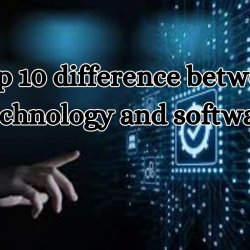
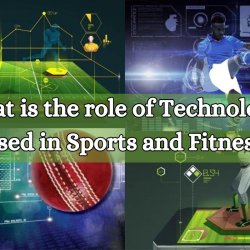
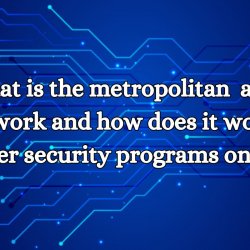
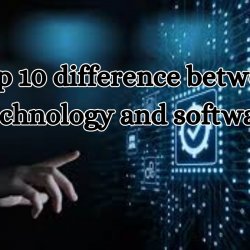
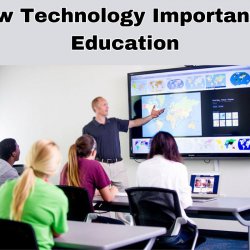
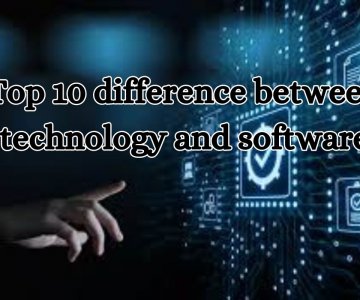
Ingen kommentarer endnu